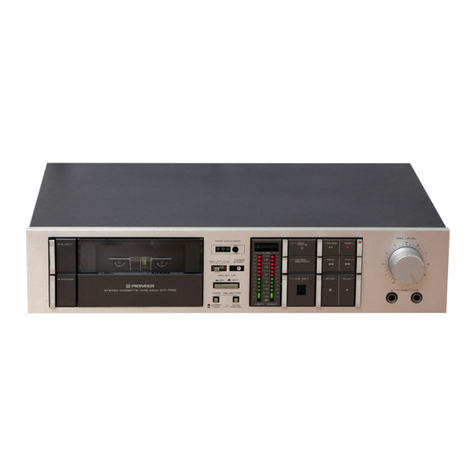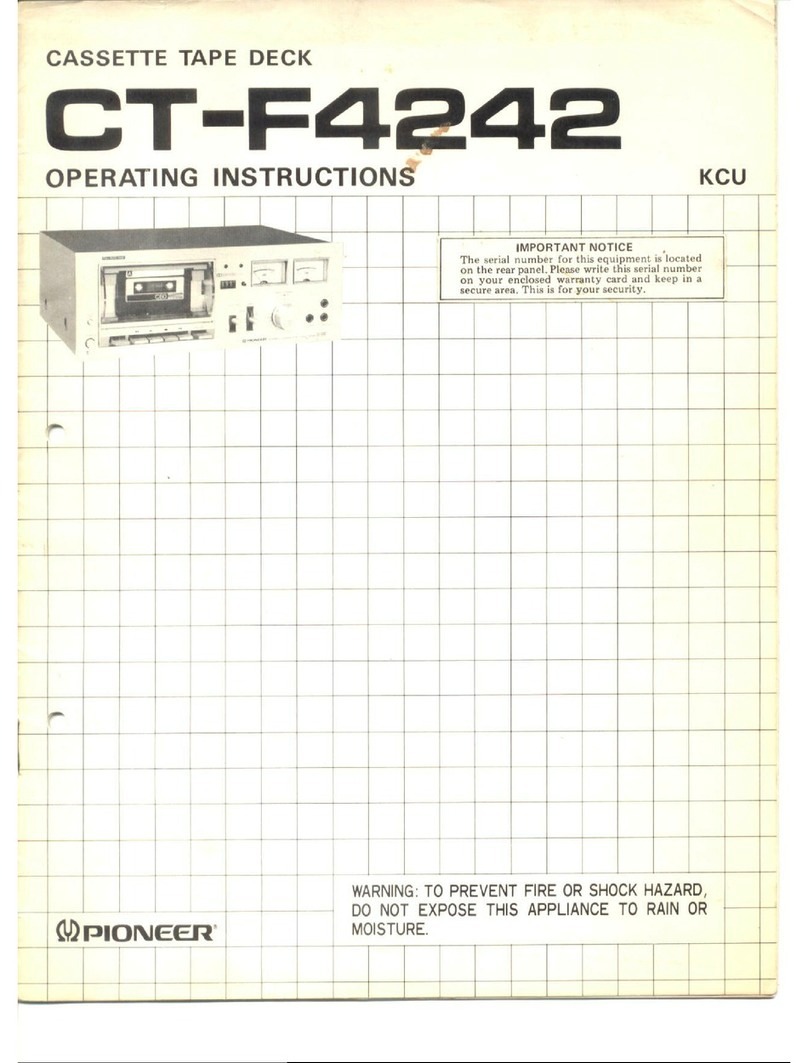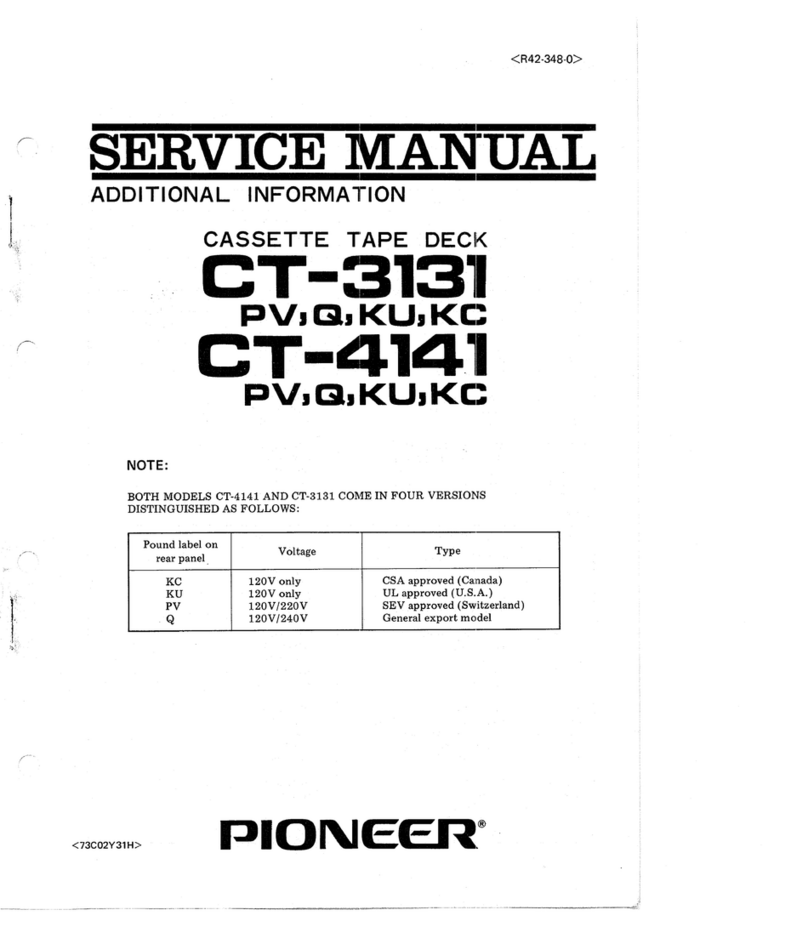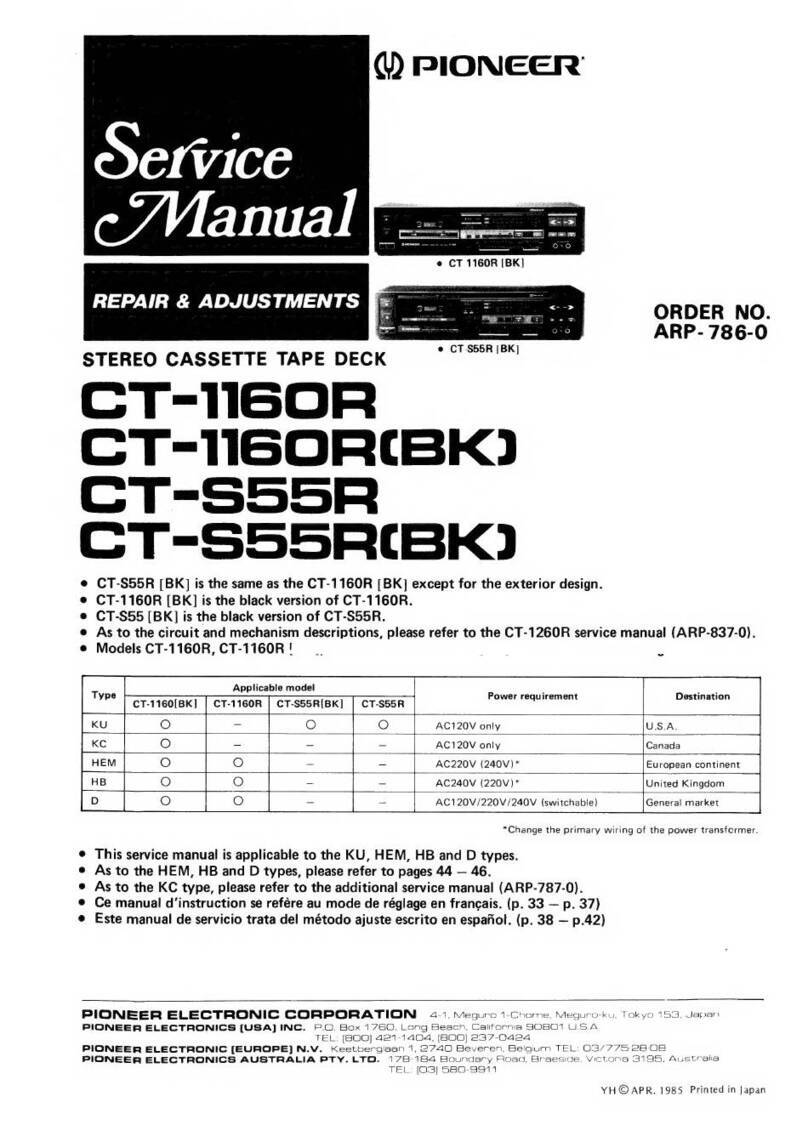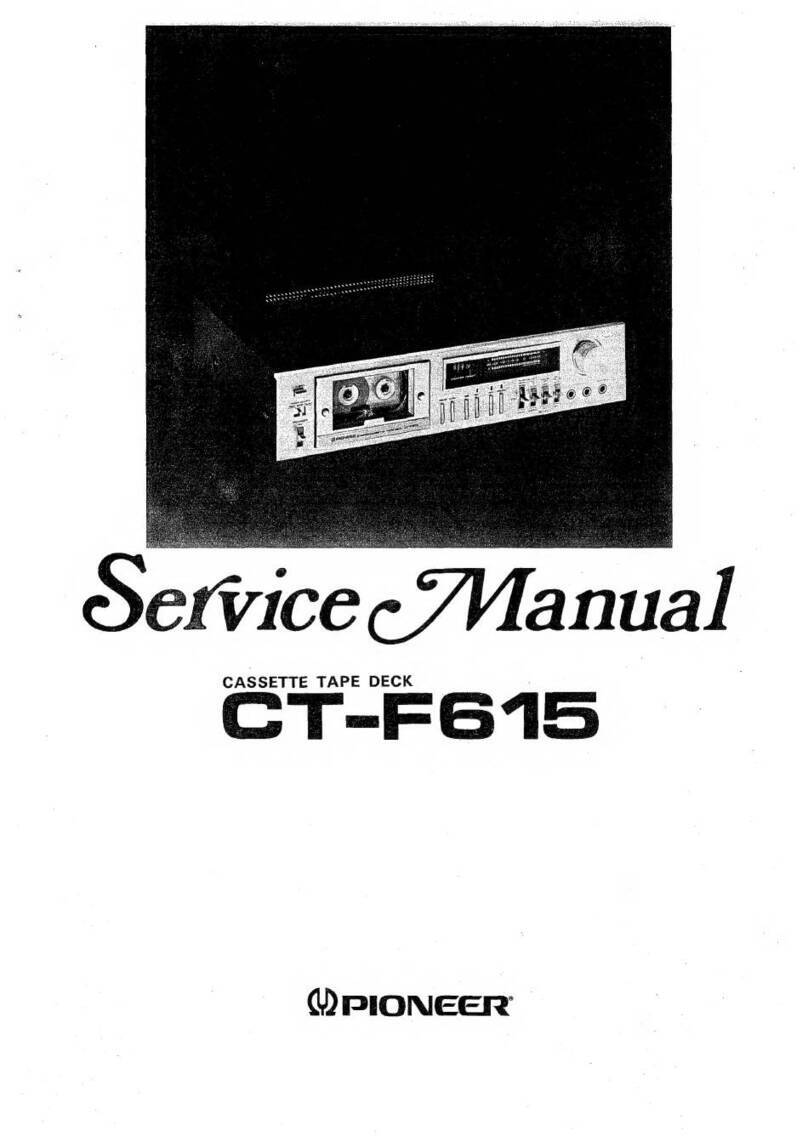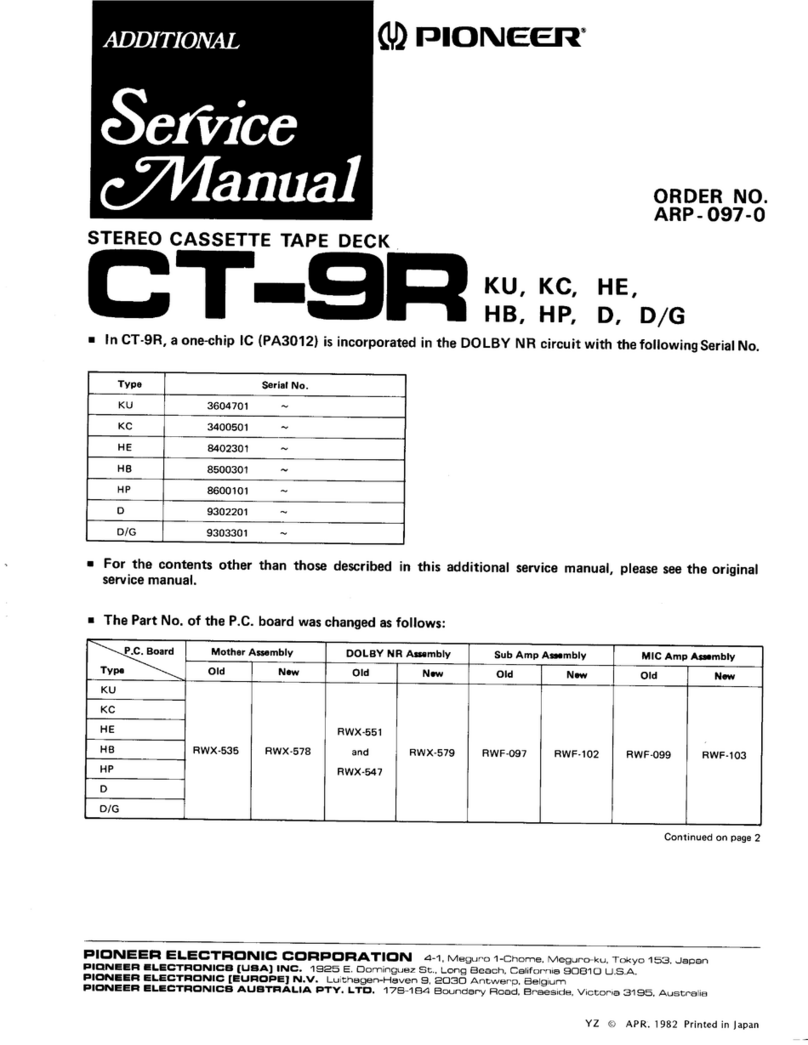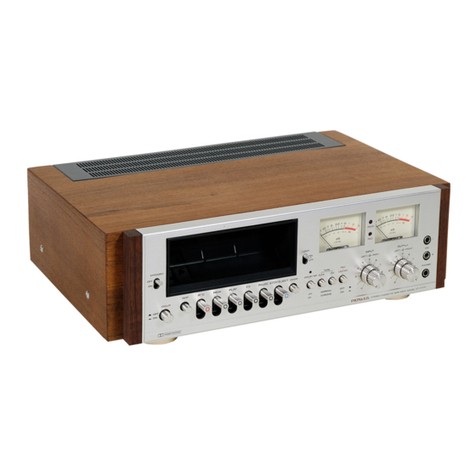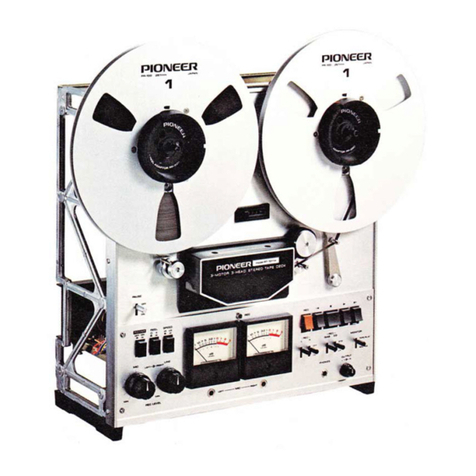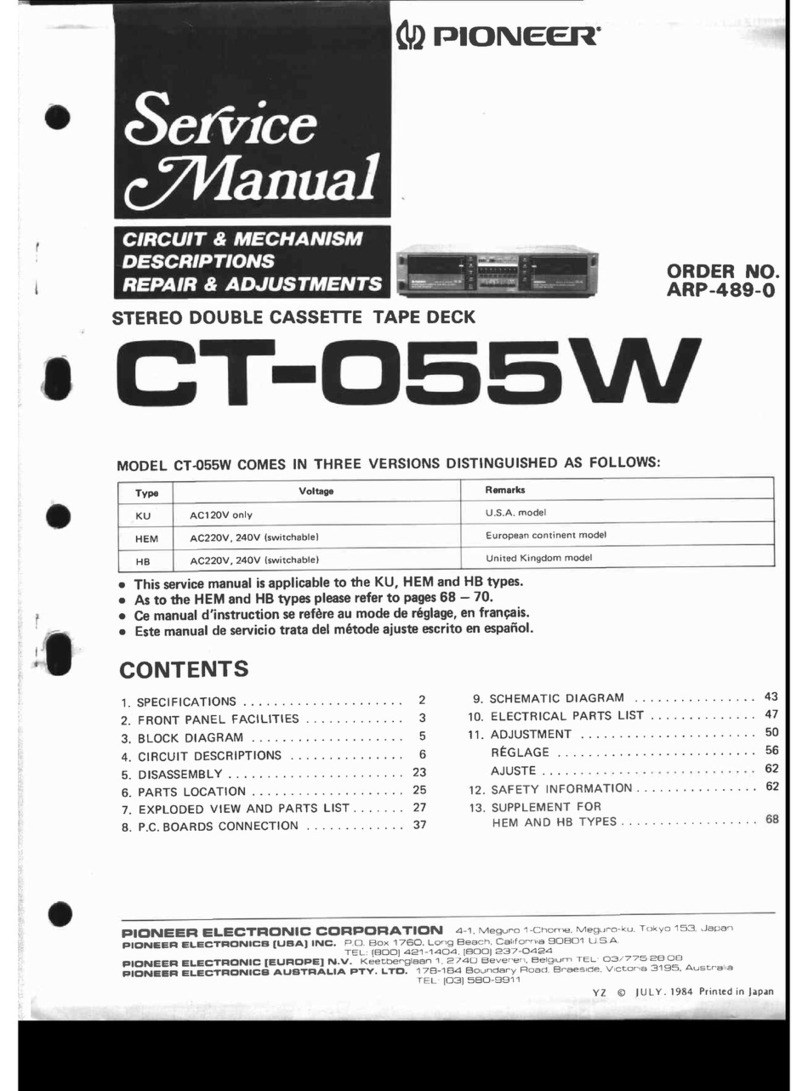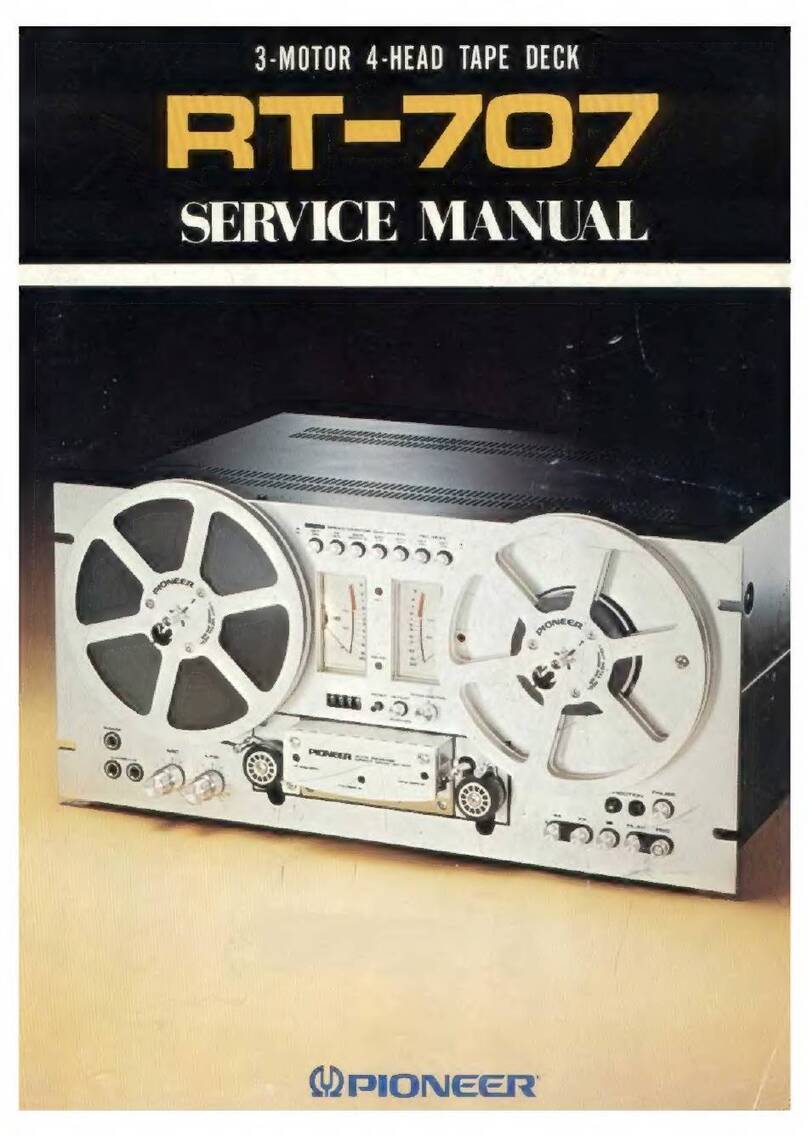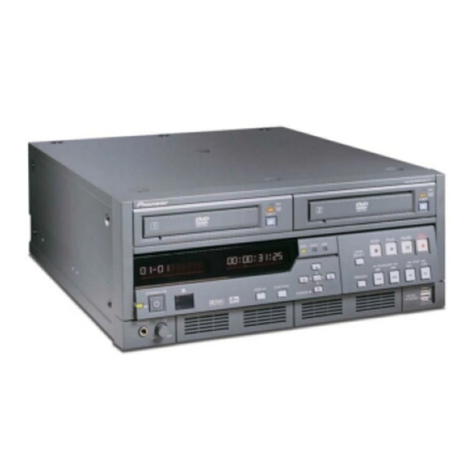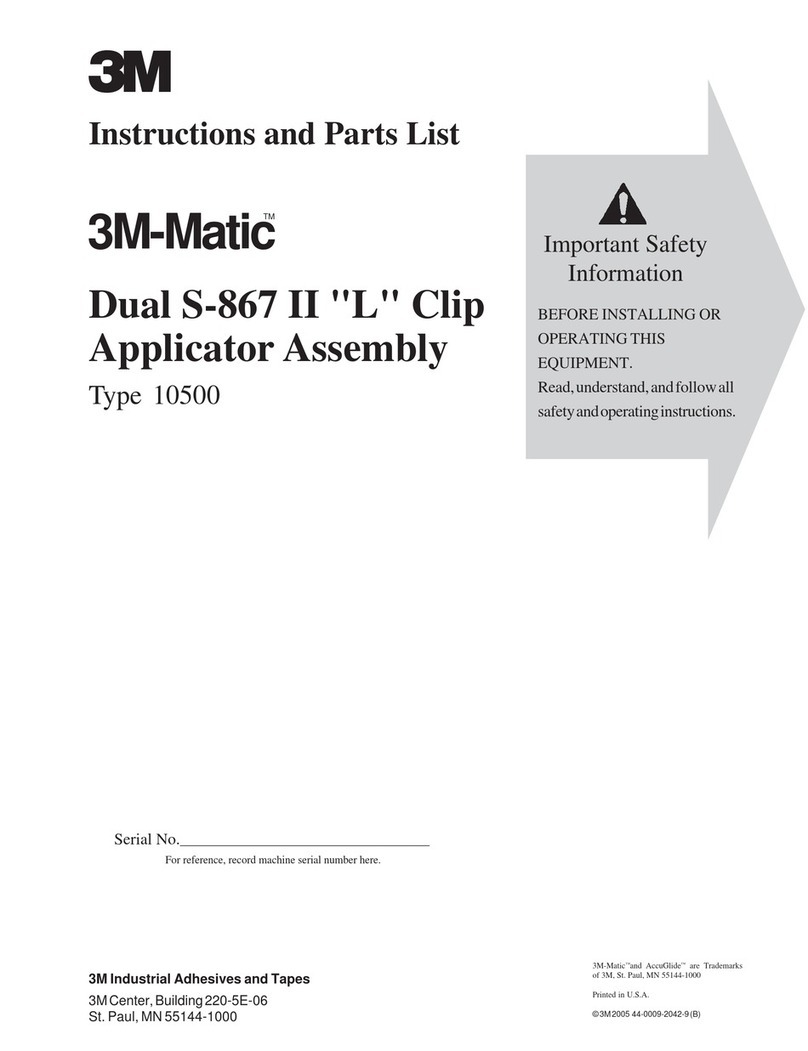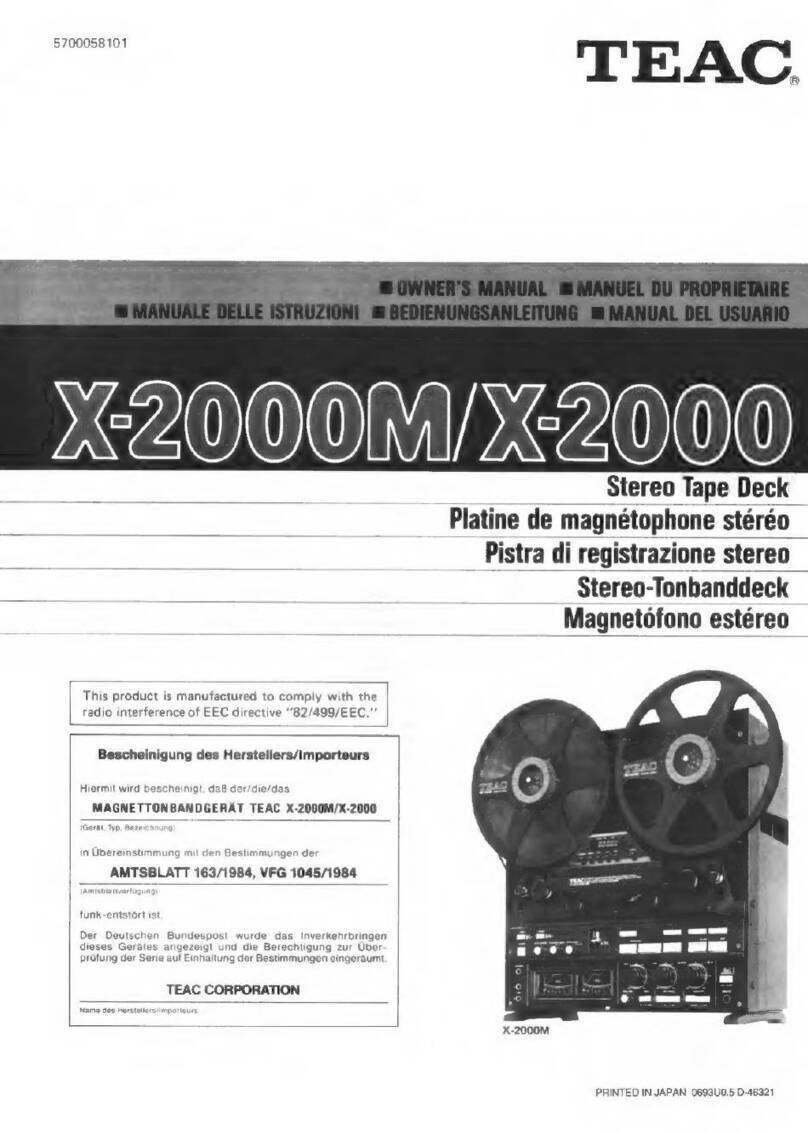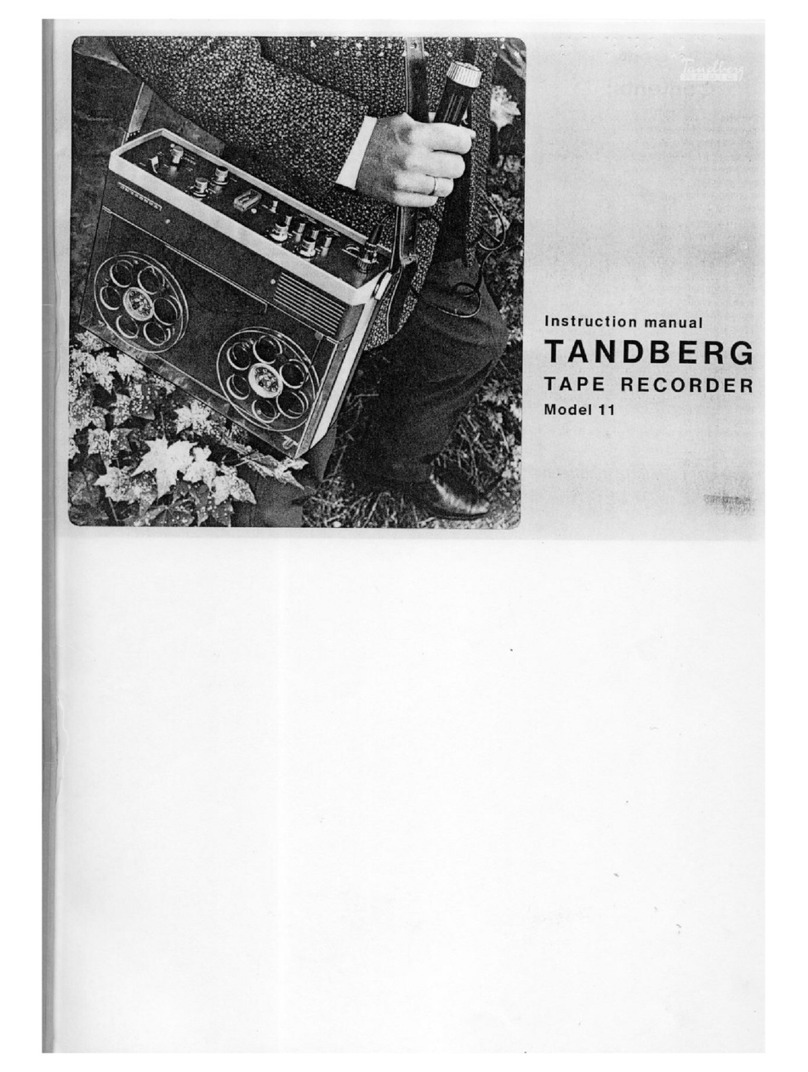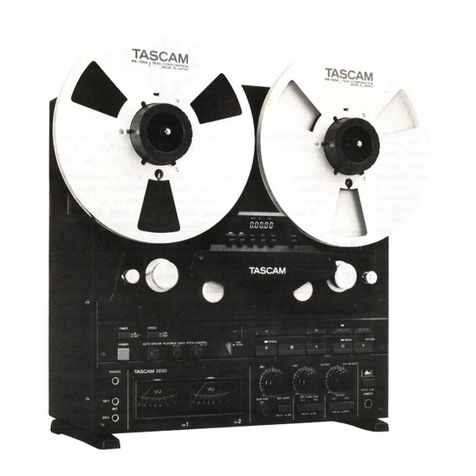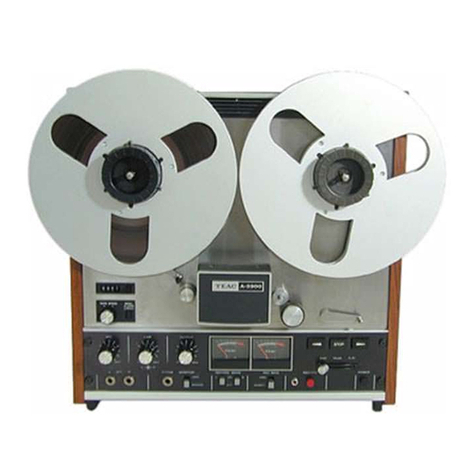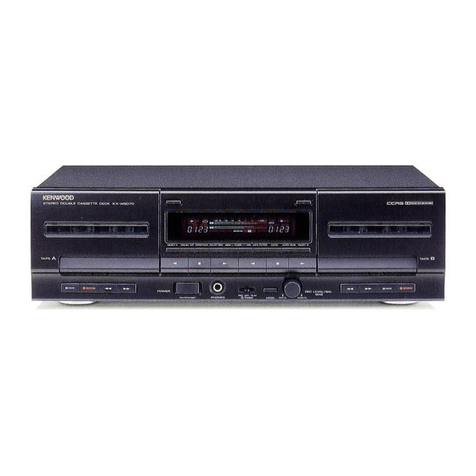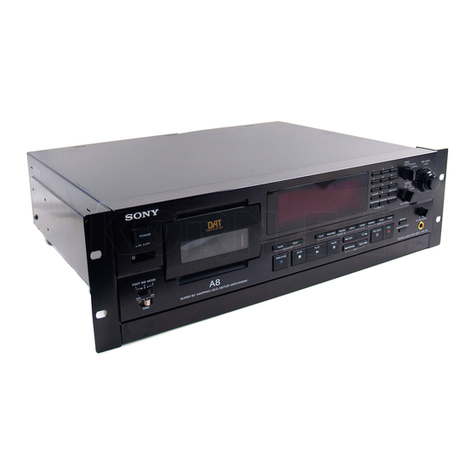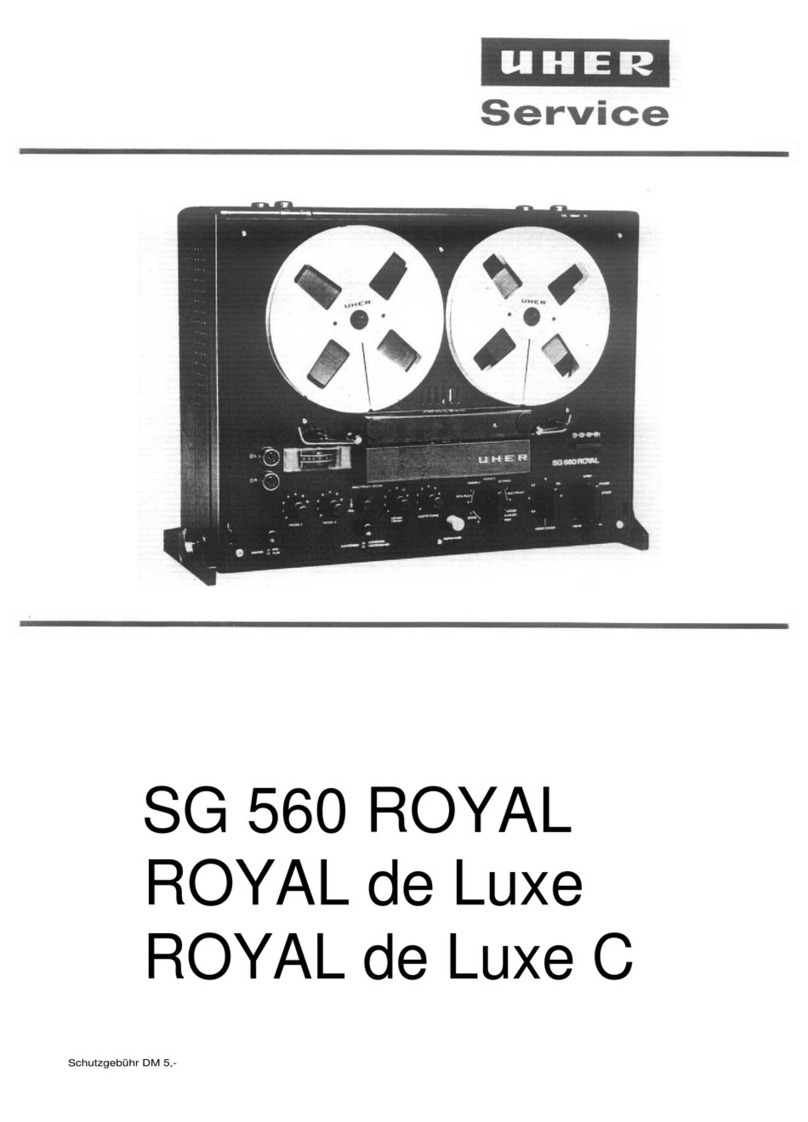CASSETTE
TAPE
AUTO
TAPE
SELECTORMECHANISM
This mechanism
uses
the sensorholes
on the cassette
taoe
to detect
the type of tape
being
used.
lt then
automaticallv
adjuststhe proper recording
bias
and equalization
for the
rape.
The sensorholesfor thevarious
tape
types
are
shownin the
figure
below.
Sensor
Large
cassette
hubsand
Small
cassette
hubs
The figure showsthe differencebetweenlarge
and small
cassette
hubs. Adjust the TAPE CAPACITY SELECTOR
correctly in order to obtain an accurate
remainingtape
time.
THEDUALMODE
COUNTER
Thisunit has
adigitaltapecounter
thatcan
alsodisplay
the
amount of playbackor recording
time remaining
during
tapetransport.When
power isfirst
turnedon, the counter
operates
asa normaltapecounter.
To change
to the remain-
ingtime display,depress
the countermode
selector
switch;
a dot (.) will appearin the counter.When
the PLAY or
REC switch is depressed,
the counter will display an
approximatevalue
of the remaining
time.During
thistime,
thedot flashes
on andoff to showthecounteris
calculating
theremainingtime.
Oncecalculationshave
been
completed,
thedot will remainlit andtheexact
remaininq
timewill
be
displayed.
When tape transportis interrupted
before
the end of the
tape is reached
and then started
again,the process
starts
again,
an approximate
valuedisplayed
first and then the
exactvalue
a shorttime later.
During
the fast
forward
and
rewind modes,
the time indication
changes
in 10 second
intervals,
returning
to 1 second
intervals
when the STOP
switchisdepressed.
Whenthe direction
of tapetravel
isre-
versed,
the counter
automaticallychangesto indicate
time
remaining
inthenewdirection.
NOTE:
. Theremaining
timefunction
operates
only for tapes
with tape
capacity
selector
indicators
l4 types).
The
remainingtime
func'
tion maynot operate
properly
withcommercially
pre'recorded
tapesandtapes
with no timecapacity
markings.
6
ln this case,the AUTO BLE system will not function.
NOTE:
The tape selector /s ser to the chrome tape
position when a metal
tape without the regulated
sensing
holesisused.ln thiscase,
prop-
er recording and erasure
may not be possible. The
ptayback of pre_
recorded tapes is not affected. lt is recommended that vou use
metal tapesequipped with detection ho/es.
No sensor
holes
''3 {'i'
?)
Normal tape
Smallhubs Large
hubs
o The remaining time indication varies slightly depending on the
cassette
in use.Also, the calculator is designedto display 00.OO
while there is still a small amount of time remaininq bmount
varies
for tapelengthsand manufacturers).
. Depressing
the STOP switch while the counter is still calculat-
ing (dot is flashing on and off) may prevent the counter from
calculating the exact remaining time. Depressthe PLAY switch
againto obtain the exact value.
,ir=-*I.,
ln n r-t
nl
l,JLiUr:'l tr tr il?i:o.f'*"'
is
| . rtMr:
.F'..l,,
ln n 11 n I Durinsthe tape
lLtL|L|Lll tr tr countermode
| .rtME
.iou- r.I=.
i! 5i,l 5l tr tr ca,cu,atins
I .
rrl/E
I..,5=-o1..
IF
5.:t
Il tr l
| ____:J". Calculations com-
pl
eted
',i1{
